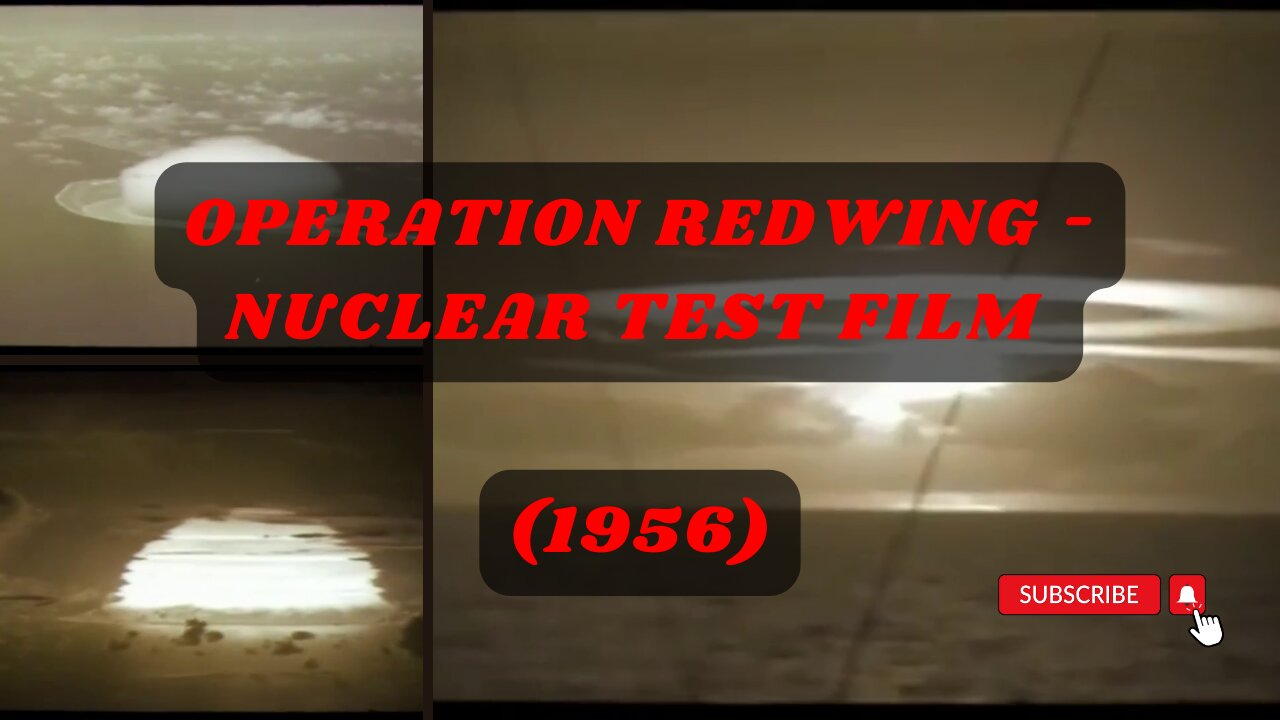Premium Only Content

Blast from the Past: Operation Redwing's Test - First-Ever Airdrop of a Thermonuclear Weapon
From May 4 to July 21, 1956, Operation Redwing unfolded as a pivotal 17-test nuclear weapons series at the Pacific Proving Ground. The Atomic Energy Commission (AEC) orchestrated these tests to evaluate high-yield thermonuclear devices, a task unfeasible at the Nevada Test Site.
Over 10,000 military personnel and civilian employees from the AEC and the Department of Defense actively participated in these nuclear trials. Notably, the USS Mt. McKinley hosted 15 American press, radio, and television reporters who observed the LACROSSE and CHEROKEE tests. Remarkably, these journalists marked the first uncleared U.S. civilians in a decade to witness an American nuclear test in the Pacific.
During Operation Redwing, the AEC made significant strides in miniaturizing warheads. This progress allowed for the deployment of warheads equivalent to the 90-ton MIKE device from a bomber. The series also contributed to advancing the AEC's designs for nuclear weapons aimed at minimizing fallout. Moreover, it furnished critical insights for the development of nuclear warheads tailored for missiles.
The comprehensive nature of Operation Redwing extended to exposing complete weapons systems to blast effects. A notable milestone was the successful use of a fallout computer for the first time during these tests. Among the series highlights was the CHEROKEE test, representing the inaugural airdrop of a thermonuclear weapon by the U.S. military.
-
 LIVE
LIVE
TheCrucible
1 hour agoThe Extravaganza! EP: 65 (11/25/25)
8,878 watching -
 LIVE
LIVE
Kim Iversen
1 hour agoThe Macrons Tried To KILL Candace Owens?
1,800 watching -
 1:15:59
1:15:59
vivafrei
3 hours agoKash interview - 27 Minutes of No Answers! Another Soft-on-Crime Catastrophe! Pedo Coach? & MORE
148K55 -
 1:21:29
1:21:29
Winston Marshall
2 hours agoThe Dangerous Fracturing on the American Right Over Israel
9.23K30 -
 58:20
58:20
Redacted News
2 hours ago"Agenda 2030: You Will Own NOTHING — Here’s What That Really Means"
28.4K41 -
 24:59
24:59
Stephen Gardner
3 hours agoBREAKING LEAK: Trump Prepping Huge White House Shake-Up!
20.9K33 -
 23:43
23:43
Jasmin Laine
2 hours agoLiberal Minister Demands ‘MAGA Apology’—MELTS DOWN Over ‘Trade War’
4K2 -
 LIVE
LIVE
LFA TV
19 hours agoLIVE & BREAKING NEWS! | TUESDAY 11/25/25
844 watching -
 LIVE
LIVE
freecastle
7 hours agoTAKE UP YOUR CROSS- Be devoted to one another in LOVE. Honor one another ABOVE yourselves!
143 watching -
 18:24
18:24
Neil McCoy-Ward
2 hours agoA Warning For European Citizens (THIS IS BAD!)
14.8K6